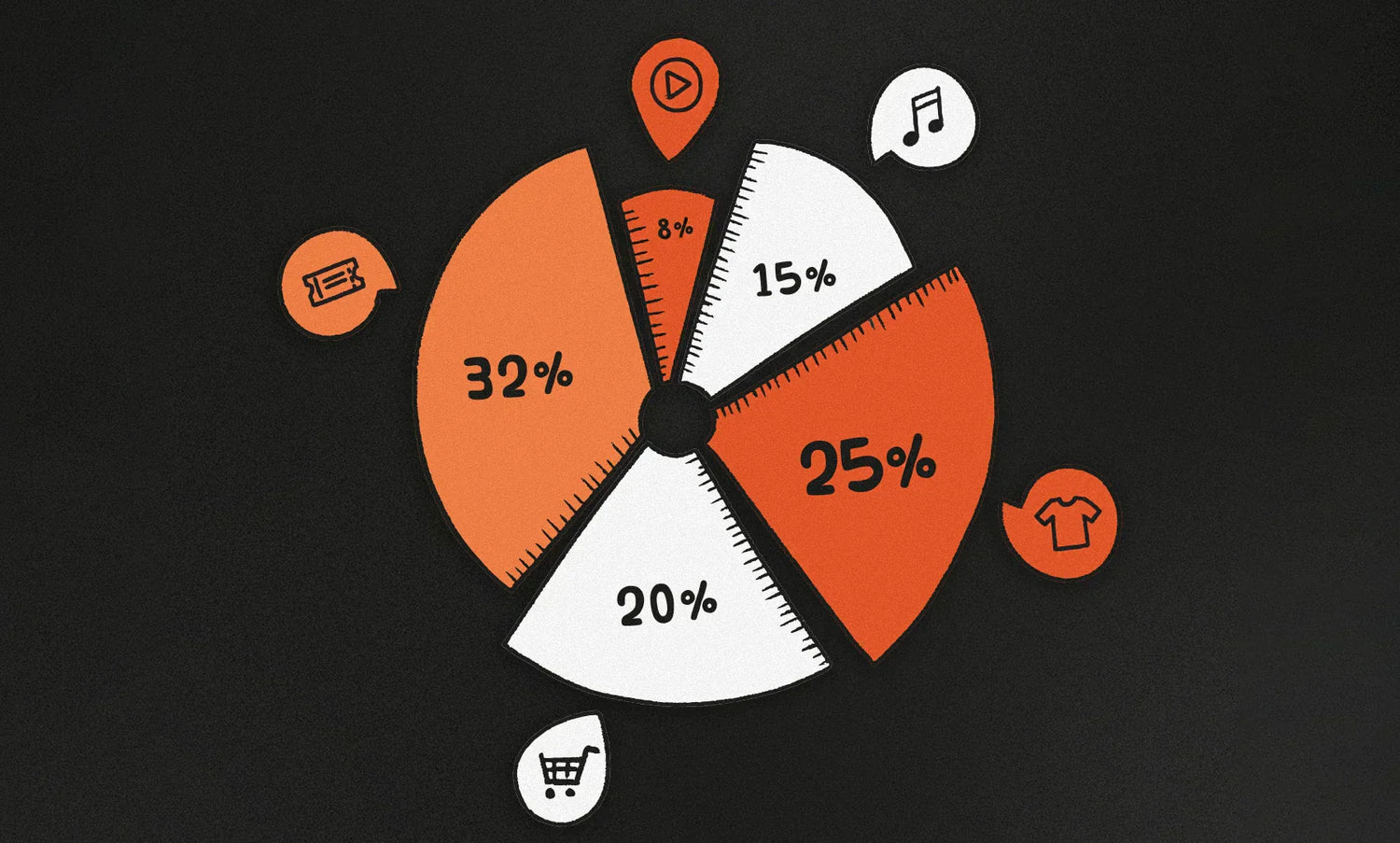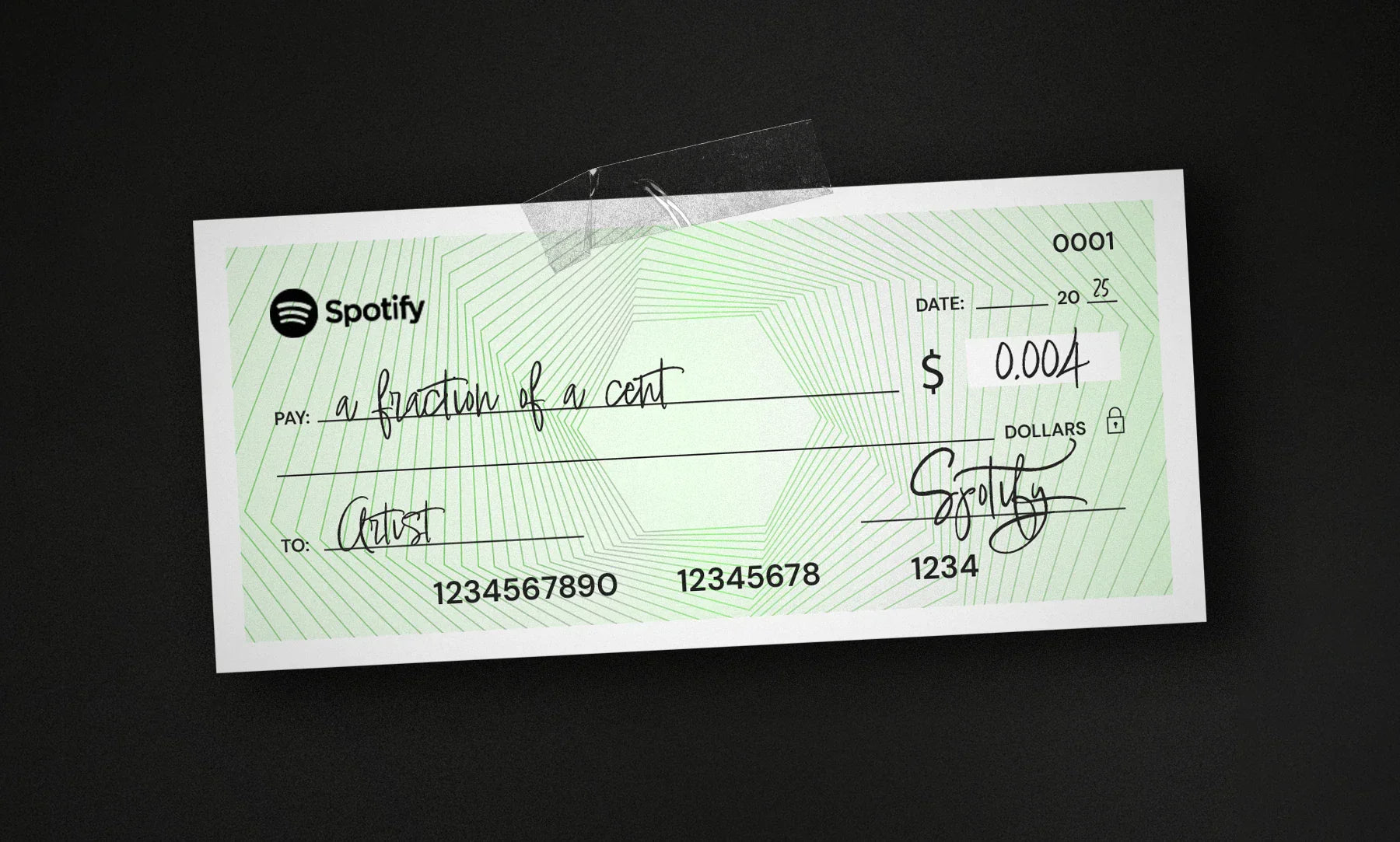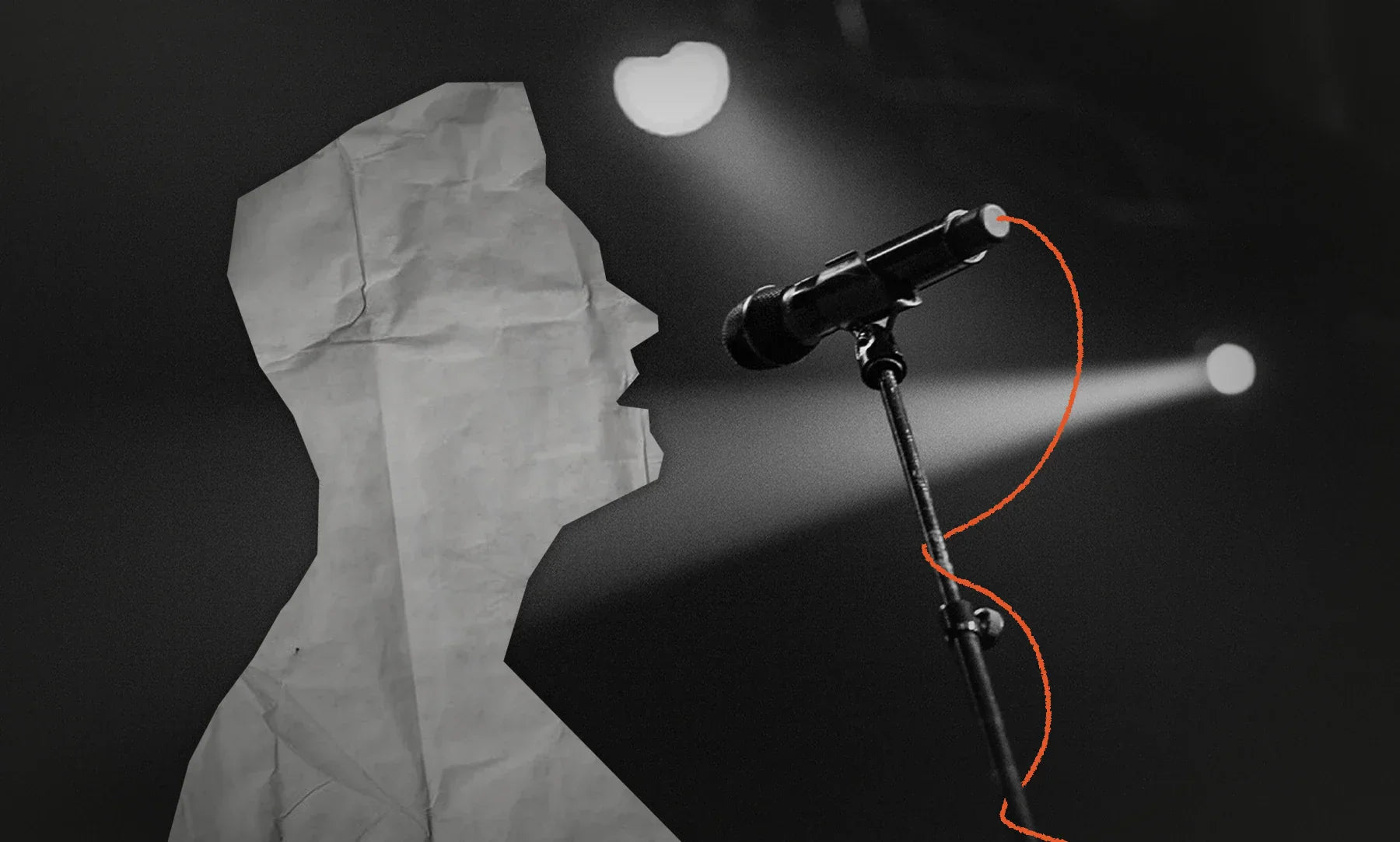If you’ve searched high and low for how to earn money as a musician, there’s one thing you have to remember: streaming is your billboard, not your business model.
There is no fixed per-stream rate. Streaming services pool revenue and pay out based on listener behaviour and licensing, which is exactly why streaming should feed your offers, not replace them.
If you’re an independent artist trying to build a stable cash flow this year, this guide is for you. You’re probably running a lean DIY operation with one trusted collaborator and a careful budget. Maybe your songs are getting streams, but merch or music sales aren’t moving yet. We’re going to map the revenue streams artists actually use today and stack them into a simple, repeatable system that pays for your next release.
Build the ladder and let streaming be part of your revenue stack, not your whole business.
How To Make Money As A Musician: Core Revenue Streams
Before we get started, a caveat.
It’s easy to get overwhelmed when you see all the avenues you have to make money as an indie musician. Don’t let too many options give you decision paralysis, or make you feel like you’re not doing enough. Be honest with yourself about where you are in your career and what you want to accomplish. Then, choose the things that you have the capacity to maintain.
Certain choices are helpful to start with, depending on your current strengths:
|
Revenue Stream |
Who It’s For |
|
Streaming and Digital Distribution |
Indie artists who are already releasing singles or EPs on a steady cadence. |
|
Live Performances and Touring |
Performers with a 45 to 60-minute set and local demand. |
|
Merchandise and Direct to Fan Marketing |
Artists with a strong visual identity or collectible-friendly releases. |
|
Music Publishing and Royalties |
Songwriters and composers, including self-released artists. |
|
Teaching / Educational Services |
Players, producers, and writers who can teach a niche skill. |
|
Online / Live Streaming Shows |
Performers with a set and an online audience of any size. |
|
Crowdfunding and Fan Support |
Artists with a clear project or ongoing behind-the-scenes value. |
|
Brand Partnerships and Sponsorships |
Artists with a defined audience and brand-safe content. |
Here’s how to get started with each of these.
Streaming And Digital Distribution
If you are an indie artist releasing singles/EPs regularly, you’ll be using Spotify, Apple Music, YouTube, TIDAL, and Bandcamp. These platforms can help you earn some income, and, more importantly, attention you can turn into future revenue.
Treat every drop like an episode in a series. If the quality holds, a release every 4-8 weeks keeps you present without burning you out.
Context matters. There are an overwhelming number of tracks on Spotify, and the majority of overall streams are from big names in music. Your competitive edge is not “more songs, faster.” It is a clear offer, what supporters can buy beyond streams, and a direct line to your fans, email, and SMS, so attention turns into income.
Bandcamp is still the most fan-first marketplace in the game, with transparent fees (roughly 15% on digital, 10% on physical, plus payment processing). That clarity makes it easier to forecast revenue and set goals.
Action steps
- Fill your metadata perfectly (artists, writers, ISRCs, lyrics, genres).
- Pitch editorial for every release.
- Post short clips with one call to action: stream, buy, or join the list.
- Capture emails and phone numbers everywhere: link in bio, Bandcamp checkout, YouTube descriptions, live shows.
- Route streaming attention to owned channels first (like your email or SMS list), then to offers, digital bundles, merch, and memberships.
Live Performances And Touring
Live shows are still your best same-day cash and the strongest way to bond with fans. Start local once you can reliably draw 50 to 100 people. Then expand with hub-and-spoke weekends: one anchor city, two drive-out shows, home by Monday.
File your setlists after every show. A PRO (performing rights organization) pays songwriters for public performances and broadcasts. In the U.S., ASCAP OnStage lets members submit setlists for eligible gigs. In Canada, SOCAN pays concert royalties when you submit a Notification of Live Music Performance and the venue is licensed. Build the habit and do not leave money on the table.
Track your per-head merch rate. If a 120-cap room spends $5 per head, that is $600 in merch alone. Add a simple VIP meet and greet, and you can double your show day without adding another gig.
Action steps
- Lock venue basics: capacity, cut, settlement, and reporting.
- Bring a clear offer ladder for each fan level: sticker/badge, staple tee, premium item, VIP.
- Collect emails at the table and from the stage.
- Submit setlists within 24 hours.
- Review per-head costs and test one change next show: better signage, tap-to-pay, bundle pricing.
- Merchandise And Direct-To-Fan
Merch is where you own the margin and the customer. Start small with two or three items you can keep in stock. Use print-on-demand for sizes and colours you cannot predict. Add limited, signed drops for the collectible crowd.
If you use Shopify, connect it to Spotify for Artists so your merch appears on your profile, your release pages, and Now Playing. Meet listeners where they already are and let them buy in two taps.
Money target: aim for 60-70% gross margin on apparel. Because payment fees, venue cuts, discounts, shipping, and promo costs quickly eat into profits, this number ensures you still net real money, maintain healthy cash flow, and have room to discount or wholesale without losing out.
Gross margin formula: (Price−Cost) ÷ Price.
For example, if a shirt costs $12 to make and you price it at $30, your gross margin is 60%. Pair preorders with small restocks so you avoid dead stock.
Music Publishing And Royalties
Publishing is long-tail money. It pays the writers for the song itself, not just a single recording.
Key terms
- ISRC: the code for a specific sound recording.
-
ISWC: the code for the underlying composition.
One composition can have many recordings, so one ISWC can map to many ISRCs. Keep titles, writer splits, and codes clean so payouts land where they should.
How Music Artists Get Paid: Where The Money Flows And What To Do
Performance Royalties
These are earned when your song is performed publicly: live shows, radio, TV, and streaming platforms. Register your works with your PRO (performing rights organization). In Canada, that is SOCAN. In the U.S., examples include ASCAP and BMI. File your setlists after shows so concert royalties are tracked and paid. Make this a habit.
Mechanical Royalties (U.S. Digital Audio)
For interactive audio streams and permanent downloads in the United States, the MLC administers the statutory mechanical licence and pays out to eligible writers and publishers. Membership is free. Register your songs and match your metadata so you can receive monthly distributions.
Note: The MLC does not cover non-U.S. uses, physical formats, or video platforms. For those, you need a publisher/admin or the relevant societies in each territory.
Sync Licensing (Placements In Film, TV, Ads, Games)
You can make a good chunk of money by sync licensing your songs. Sync fees are negotiated, not set by a blanket tariff.
When you land a placement, submit accurate cue sheets so performance royalties from broadcasts can be paid. Keep instrumental and alt edits ready (they increase your chances of getting placed and speed up approvals).
Action steps
- Register every work on release. Align titles across ISWC (song) and all ISRCs (recordings).
- Use one canonical song title and consistent writer names to avoid splits going missing.
- If you do not have a publisher, consider an admin service to register globally and chase unmatched royalties.
Teaching And Educational Services
If you can teach, you can smooth out your income between releases. Start small: one-on-one lessons, a focused workshop, or a short course built around a skill you know cold.
Create a repeatable one-hour plan, then plug in a simple scheduler so students can book and pay without a dozen emails. Hit record during sessions and include the replay in the package. That alone raises the value and helps students actually retain what they learn.
As demand builds, turn your best material into an on-demand mini-course. Keep it compact and outcome-driven. Add tabs, stems, or project files so people can follow along at their own pace.
When your calendar starts filling, introduce a small group option. It lets you help more students at once and increases your hourly earnings without burning you out.
Online And Livestream Shows
Livestreams convert engaged listeners into supporters without the travel bill. Pick one platform to start and treat it like a recurring show with a theme. Set a cadence you can stick to. During the stream, make two or three clear asks: tip jar, merch, or email list. Keep the call to action visible on screen and repeat it in plain language.
On YouTube, work toward the thresholds that unlock fan funding and then full revenue sharing. Consistency is what gets you there: regular uploads, community posts, and live sessions that hold attention. Use highlights from each stream as short clips to pull new people in, then point them right back to the next show.
For Twitch, aim for affiliate. The requirements are achievable with a small but steady audience if you stream reliably and nudge viewers to follow and stick around. Keep chat lively with a simple segment structure and a mod who can post your links at the right moments.
After every show, do a quick debrief. How many viewers became subs? How many clicked through to your store? What was your revenue per viewer? Save what worked, tighten what dragged, and invite everyone to your email list so your next stream starts stronger than the last.
Crowdfunding And Fan Support
Use crowdfunding for big moments and membership for steady access. Think about collecting enough pledges for an album, video, or tour; behind-the-scenes updates; demos; and monthly perks for the membership. Keep rewards mostly digital so you can avoid postage and inventory. You can price tiers simply, with a clear “most popular” option.
Pad your timelines. Everything takes longer once you are juggling art, life, and logistics.
Before you launch, confirm platform fees and payout rules so your net take is crystal clear. Patreon and Kickstarter publish current fee structures in their help centres. Read them, run the math, and bake those fees into your targets.
Then set up your content calendar in advance so you can deliver consistently after the hype fades.
Action steps
- Define one clear goal and deadline for the campaign.
- Choose three to five tiers, digital-heavy rewards, and a VIP option.
- Make a short video that explains the project in plain language.
- Post-launch update schedule so backers feel looped in.
Brand Partnerships And Sponsorships
Sponsors can fund content, tours, and releases when your audience is well-defined and your content is brand-safe.
Build a tight one-page media kit with audience stats, past results, and example deliverables. Include your values so partners know what you will and will not do. Price to cover production costs and the lift you can credibly show: impressions, engagement, clicks, or sales.
Do the paperwork cleanly. Outline deliverables, dates, approvals, and usage rights.
After the campaign, send a short report with screenshots, links, and key metrics. Make it easy for them to say yes to the next one.
Action steps
- Make a one-page media kit, contact info, and rate guidance.
- Shortlist target brands that actually fit your audience.
- Set a clear scope: what you will deliver, where it will live, and for how long.
- Send the post-campaign wrap report with results and a renewal ask.
Major Challenges And How To Navigate Them
You are building a career, not a moment. That means steady systems, clean admin, and offers that meet fans where they already are. Here are the biggest roadblocks you’ll face and how to overcome them.
Unexpected Cash Flow
Cash shows up in waves, but so do expenses. A sudden van breakdown, a late payout, or a slow month can knock you off balance.
How do you get around it? Plan for the bumpiness. Keep a small buffer so one surprise does not cancel a session or force you to pass on a good gig.
Competition
Oversaturation is real, so own your audience and your offers. Streaming keeps growing, but it will not pay your rent unless you move listeners from plays to purchases.
Build an online store, an email list, and a simple path that turns attention into income you control.
Admin Mistakes
These can be expensive, and when they happen, your stomach might feel like it’s dropped to the floor. A missed registration can hold money for months. Sloppy titles or splits create conflicts that drag on.
File your live setlists. Register every work with your PRO. If you are due U.S. digital audio mechanicals, register with The MLC. Keep one shared sheet with titles, ISRC, ISWC, writers, splits, and status links. It looks boring. It pays.
Burnout
An object in motion stays in motion, but you’re not an object. If you’re building a system that depends on you being a music-marketing machine, you’re going to crash. Your amazing musician friend may be handling seven income sources just fine, but he may also have a lot more energy, fewer demands, or a better support system. Compare and despair, my friend. Plan things that are sustainable for you, not what you think you should be doing.
Protect your mind like it is your gear. Batch admin into one block. Limit task switching. Put creative hours on the calendar and treat them like a show you would never miss.
Actionable Strategy You Can Run
Treat songs like assets, not one-day events. A strong track should pay in several ways for years.
Begin with your strongest lane. Are you primarily a performer, a producer, a teacher, or a content creator? Lead with the work you can deliver consistently, then add one new revenue stream per quarter and measure it. Keep what works, cut what doesn’t.
Build simple systems first. Start with a storefront you control and an email list you grow. Add basic analytics you actually check. Simplicity makes you faster, and speed compounds.
Think in effort and margin. What’s low-effort, high margin? What’s high-effort, low margin? If a new tactic steals time from your proven moves or cannot be measured, it is a cost, not an investment. Don’t bother scaling it.
What To Set Up
Storefront. Use Shopify for full control or Bandcamp for a music-native store. Connect Shopify to Spotify for Artists to surface merch on your profile and release pages. Bandcamp’s fee policy is public and predictable, which helps with cash-flow planning.
Email and SMS. Build a welcome series for new subscribers and a release sequence. Tag buyers vs streamers so messages match intent.
Analytics. Use GA4 for your site and UTMs for links. Keep a simple dashboard that shows what each stream earned, not just vanity numbers.
30-60-90 Day Plan
Days 1 to 30: Foundation
Goal: set up your store, list, and admin so money has a place to land.
- Launch a storefront with 2 products (for example, one tee and one digital bundle).
- Capture emails everywhere: link in bio, Bandcamp checkout, merch table QR, YouTube descriptions.
- Register new songs with your PRO and with The MLC if eligible for U.S. digital audio mechanicals.
- Draft a simple content cadence: 2 posts per week, 1 email per week.
- Create a central sheet for titles, ISRC, ISWC, splits, and registration status.
Days 31 To 60: First Offer And First Show
Goal: ship one paid offer and run one performance to test conversion.
- Launch one small offer, like a $15 stem pack or a $49 workshop.
- Host one livestream with a pinned call to action to your tip jar or store.
- On YouTube, work toward Partner milestones. On Twitch, push for Affiliate.
- Add opt-in prompts to every touchpoint: stream descriptions, pinned comments, merch table signage.
- Save highlights as clips and link back to the store and next show.
Days 61 to 90: Level up
Goal: increase average order value and validate what scales.
- Test a VIP add-on for a local show or plan a two to three-city weekend.
- Open a preorder or a membership. Include platform fees in targets so the net is clear.
- Bundle winners, for example digital pack plus tee, or a workshop plus stems.
- Review channel payback. Cut what drags. Double down on what returns profit fastest.
- Schedule the next 90 days using the proven cadence.
Wrap-Up: How To Make Money As An Independent Artist
Streaming builds the crowd, but diversified income builds a career. You need a stack that fits your lane, an owned audience, and a rhythm you can sustain. Do that, and you’ll stop worrying about how to pay your rent this month and start wondering how far you want to take this.
If you want a head start, our organic playlisting and monthly listeners services open the door to steady discovery so you can test offers, capture contacts, and build real cash flow around the songs you believe in.


